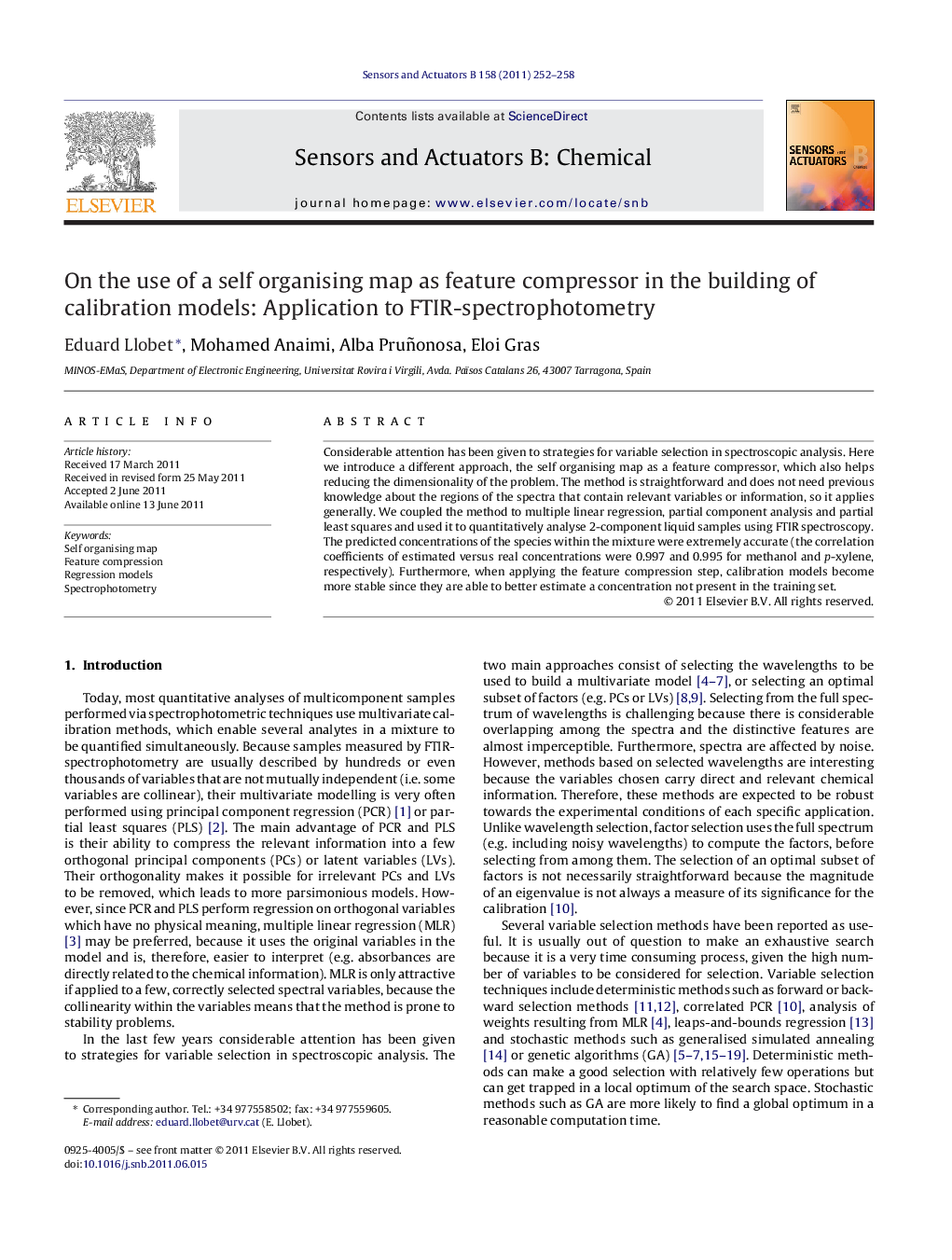| Article ID | Journal | Published Year | Pages | File Type |
|---|---|---|---|---|
| 740762 | Sensors and Actuators B: Chemical | 2011 | 7 Pages |
Considerable attention has been given to strategies for variable selection in spectroscopic analysis. Here we introduce a different approach, the self organising map as a feature compressor, which also helps reducing the dimensionality of the problem. The method is straightforward and does not need previous knowledge about the regions of the spectra that contain relevant variables or information, so it applies generally. We coupled the method to multiple linear regression, partial component analysis and partial least squares and used it to quantitatively analyse 2-component liquid samples using FTIR spectroscopy. The predicted concentrations of the species within the mixture were extremely accurate (the correlation coefficients of estimated versus real concentrations were 0.997 and 0.995 for methanol and p-xylene, respectively). Furthermore, when applying the feature compression step, calibration models become more stable since they are able to better estimate a concentration not present in the training set.
